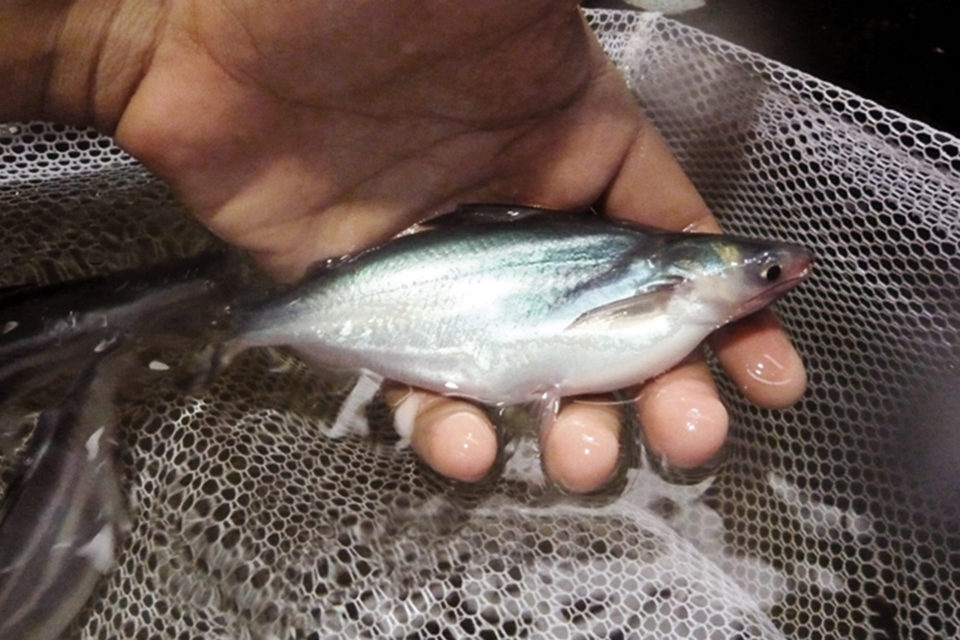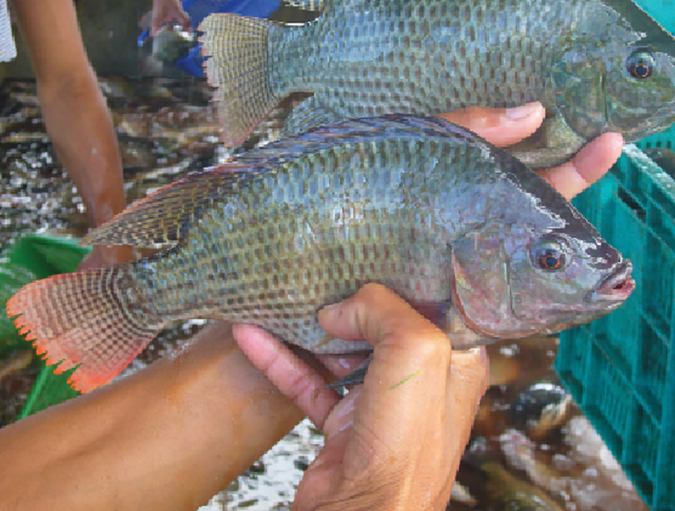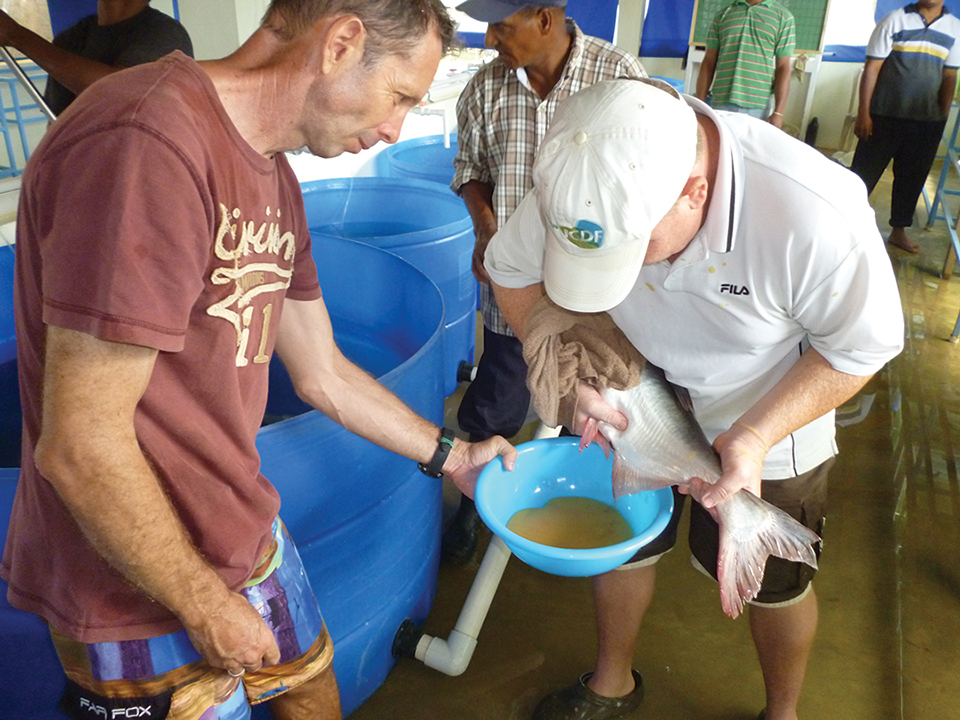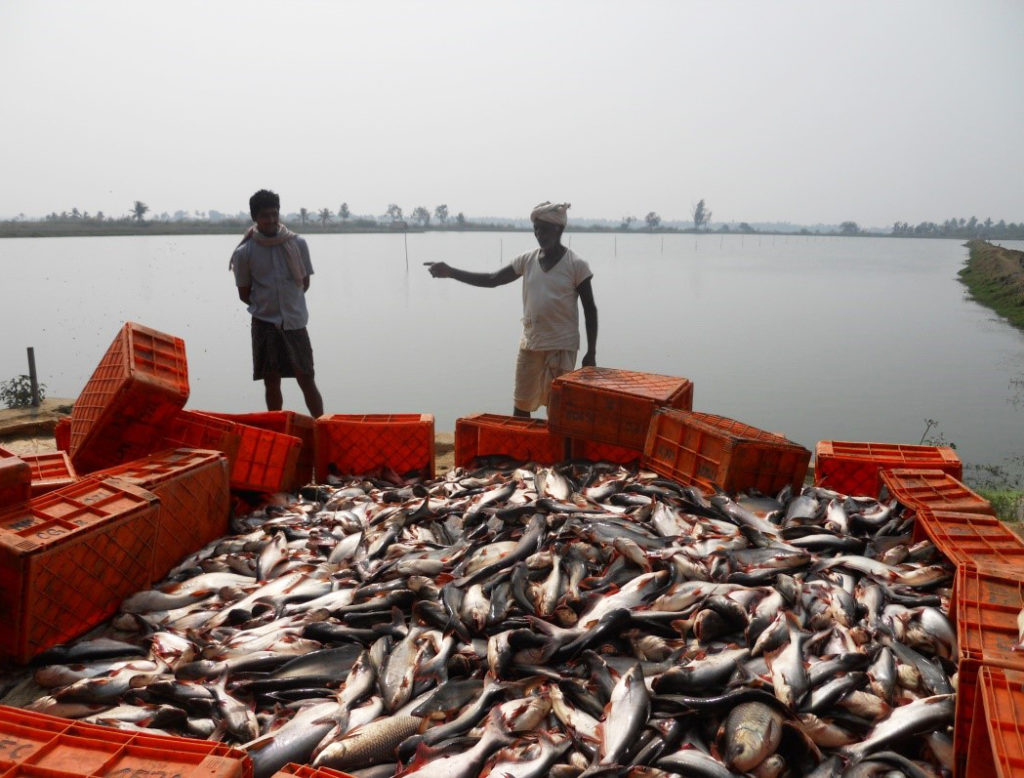Results show significantly improved performance parameters

Aquaculture production has increased rapidly within the last 30 years, with the vast majority of this production expansion occurring in Asia. Pangasius production was a major driver of this trend. Farming of Vietnamese pangasius (Pangasianodon hypophthalmus) has become increasingly attractive for the food industry worldwide.
According to the latest United Nations Food and Agriculture Organization data, Vietnam is currently the world’s leading pangasius producer, raising over 1.15 million metric tons (MT) in 2013. Especially in Southeast Asia, farmers are looking for possibilities to economize pangasius culture.
Management concerns
However, high stocking densities and suboptimal water quality can impair fish health and growth performance. In the past, antibiotic growth promoters were often used to help overcome these limitations.
The routine use of antibiotics is a subject for much debate in the animal-farming and feed and food industries. Public opinion and regulatory authorities in most exporting countries often focus on the misuse of antibiotics in aquaculture, and public attention has shifted toward production methods. Consumers are increasingly turning to fish from sustainably managed sites, so alternatives to antibiotics are sought worldwide in a variety of forms.
Feed additives, dietary acidifiers
The growth and health status of fish can be improved through the inclusion of feed additives in high-quality feeds. This strategy will likely be one of the main factors in the future success of pangasius farming in Southeast Asia.
Among these additives, acidifiers have been increasingly used in diets for many fish species over the last decade. Successful testing has been performed with salmon, rainbow trout, African catfish, European sea bass, Asian sea bass, milkfish, tilapia and shrimp.
Dietary acidifiers, including potassium diformate, have been used in pangasius culture for the last five years. The four acidifiers used include a blend consisting of ammonia formate and ammonia propionate, a mixture of free formic and propionic acid and their salts, sodium butyrate and potassium diformate (KDF).
KDF is one of the most frequently used dietary acidifiers in aquaculture, with reports on its use available from the Americas, Europe, Africa, Asia and Australia. In general, the results show significantly improved performance parameters in pangasius fed dietary acidifiers.
Commercial-scale trial
One such trial demonstrated the effects of potassium diformate under commercial conditions in the Mekong Delta area. Added to a commercial catfish diet with 28.0percent crude protein at a 0.2 percent dosage, it was given to fish of approximately 20 grams initial body mass for 32 consecutive weeks.
More than 540,000 fish were stocked in one control pond and one treatment pond, each with a size of roughly 5,000 square meters. Thus, the stocking density was around 51 fish per cubic meter. During the trial, the water temperature in both ponds ranged 26 degrees to 33 degrees-C. The fish were kept and fed according to normal pond management.
At the end of the trial, a subsample of harvested fish indicated Pangasius in the treated group had greater weight gains than the fish in the negative control group – 1.03 versus 0.84 kg. Similarly, feed conversion, survival and protein efficiency were improved in the treated group (see Table 1). Due to the design of the study with no replicates, no statistics could be established.
Lückstädt, Performance data for Pangasius, Table 1
| Control | 0.2% KDF | Difference (%) |
|---|
Control | 0.2% KDF | Difference (%) | |
|---|---|---|---|
| Feed-conversion ratio | 1.26 | 1.16 | - 8 |
| Mortality (%) | 20 | 15 | - 25 |
| Protein-efficiency ratio | 2.75 | 2.98 | + 8 |
Improved digestion
The noted 8 percent improvement in the protein efficiency ratio, which has been previously reported in other fish species, may have been a direct impact of the acidifier on stomach pH. The main author reported last year that this direct impact on protein digestion is often overlooked.
A recent meta-analysis for potassium diformate found significantly improved weight gain and feed efficiency in tilapia at levels that can be already described as “growth promotion.” These results may not have stemmed only from the established antibacterial effects. Since acidi-fiers, if chosen properly, affect buffering capacity and/or stomach pH, they also have impacts on the digestion processes in the gastric tract – especially in the stomach. This view is supported by research from 2011 and 2012 by Spanish scientists Manuel Yufera and fellow researchers, who looked into the impacts of stomach pH and pepsin activity in marine fish.
In addition to the performance parameters, it was also interesting to investigate the additive’s impacts on protein efficiency, as despite its major influence on the sustainability of fish production, such data are still scarce.
Production impacts
In an attempt to quantify the impacts of KDF on pangasius production on average, the three available sets of data from two commercial trials and one laboratory study were evaluated.
The average impacts of 0.2 percent dietary KDF on production parameters against the negative control are displayed in Table 2.
All analyzed data showed numeric or significant improvements in the relevant performance parameters, particularly weight gain, survival and productivity. In addition, KDF showed comparable improvements in pangasius grow-out, as previously documented in tilapia in the main author’s 2012 meta-analysis. The protein efficiency was improved by an average of 4.4 percent.
This is partly supported with a significantly increased carcass yield in one of the studies. Furthermore, Ei Lin Ooi and co-workers reported in 2010 on the strong antimicrobial effects of a dietary acidifier against E. ictaluri in challenged fish.
It can be therefore be concluded that the use of dietary acidifiers, including potassium diformate, can be an effective option for sustainable aquaculture that results in improved health and performance of Pangasius.
(Editor’s Note: This article was originally published in the March/April 2014 print edition of the Global Aquaculture Advocate.)
Now that you've reached the end of the article ...
… please consider supporting GSA’s mission to advance responsible seafood practices through education, advocacy and third-party assurances. The Advocate aims to document the evolution of responsible seafood practices and share the expansive knowledge of our vast network of contributors.
By becoming a Global Seafood Alliance member, you’re ensuring that all of the pre-competitive work we do through member benefits, resources and events can continue. Individual membership costs just $50 a year.
Not a GSA member? Join us.
Authors
-
Dr. Christian Lückstädt
ADDCON GmbH
Kaiserstr. 1a
53113 Bonn, Germany -
Dr. Kai-Jens Kühlmann
ADDCON Asia Co. Ltd.
Bangkok, Thailand -
Tho Minh Van
ADDCON Asia Co. Ltd.
Bangkok, Thailand
Tagged With
Related Posts

Health & Welfare
Dietary acidification in aquaculture
Much of the chemical breakdown of foodstuffs begins in the stomachs of animals through acidification. Effective use of digestive biology is a goal in aquaculture, so dietary acidifiers have been gaining interest in recent years.

Aquafeeds
Testing dietary potassium diformate in Pacific white shrimp
Research from experimental trials demonstrate that dietary potassium diformate improves survival, growth and productivity in Pacific white shrimp (Litopenaeus vannamei), including in the presence of the Gram-negative, pathogenic bacterium V. harveyi.

Health & Welfare
Pangasius culture in Western Hemisphere
Western nations consume considerable quantities of pangasius, yet its aquaculture in tropical regions of the hemisphere has not followed. Several countries have approved pangasius aquaculture, and to date no negative environmental impacts have been observed.

Intelligence
Pangasius aquaculture growing in India
India has strengthened its role as a supplier of seafood to major global markets. Pangasius will continue to be an important contributor to the country’s growing aquaculture production.



